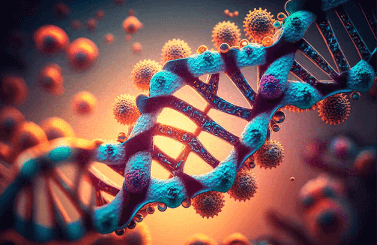Question
a.
A-DNA
b.
B-DNA
c.
C-DNA
d.
E-DNA
Posted under Biochemistry
Interact with the Community - Share Your Thoughts
Uncertain About the Answer? Seek Clarification Here.
Understand the Explanation? Include it Here.
Q. The most common naturally occurring DNA is
Similar Questions
Explore Relevant Multiple Choice Questions (MCQs)
Q. The major groove is wider in
View solution
Q. The degrees of freedom of DNA are
View solution
Q. The number of bases per turn in B-DNA is
View solution
Q. The persistence length of a section of DNA is dependent upon it's
View solution
Q. The two strands of DNA are held together by
View solution
Q. In Watson and Crick's model of DNA the purine is opposite to
View solution
Q. The A-form DNA contains
View solution
Q. Within chromosomes, DNA is held in complexes with
View solution
Q. The number of transcription factors increases with
View solution
Q. Sequence-specific DNA-binding proteins generally interact with major group of
View solution
Q. A disk shaped complex which contains two complete turns of DNA is called
View solution
Q. Structural proteins organize the DNA into a compact structure called
View solution
Q. The number of proteins in human genome are
View solution
Q. The group of proteins that read and interpret genetic "blueprint" in DNA are called as
View solution
Q. Loss of H-bonds between two complementary strands results in
View solution
Q. The DNA can be denatured by
View solution
Q. A technique which measures genetic distance between two species is called
View solution
Q. Genomic library is normally made by
View solution
Q. A labelled DNA or RNA segment, which is used to find a specific sequence of nucleotides in a DNA molecule is named as
View solution
Q. Long probes are usually made by
View solution
Recommended Subjects
Are you eager to expand your knowledge beyond Biochemistry? We've handpicked a range of related categories that you might find intriguing.
Click on the categories below to discover a wealth of MCQs and enrich your understanding of various subjects. Happy exploring!








